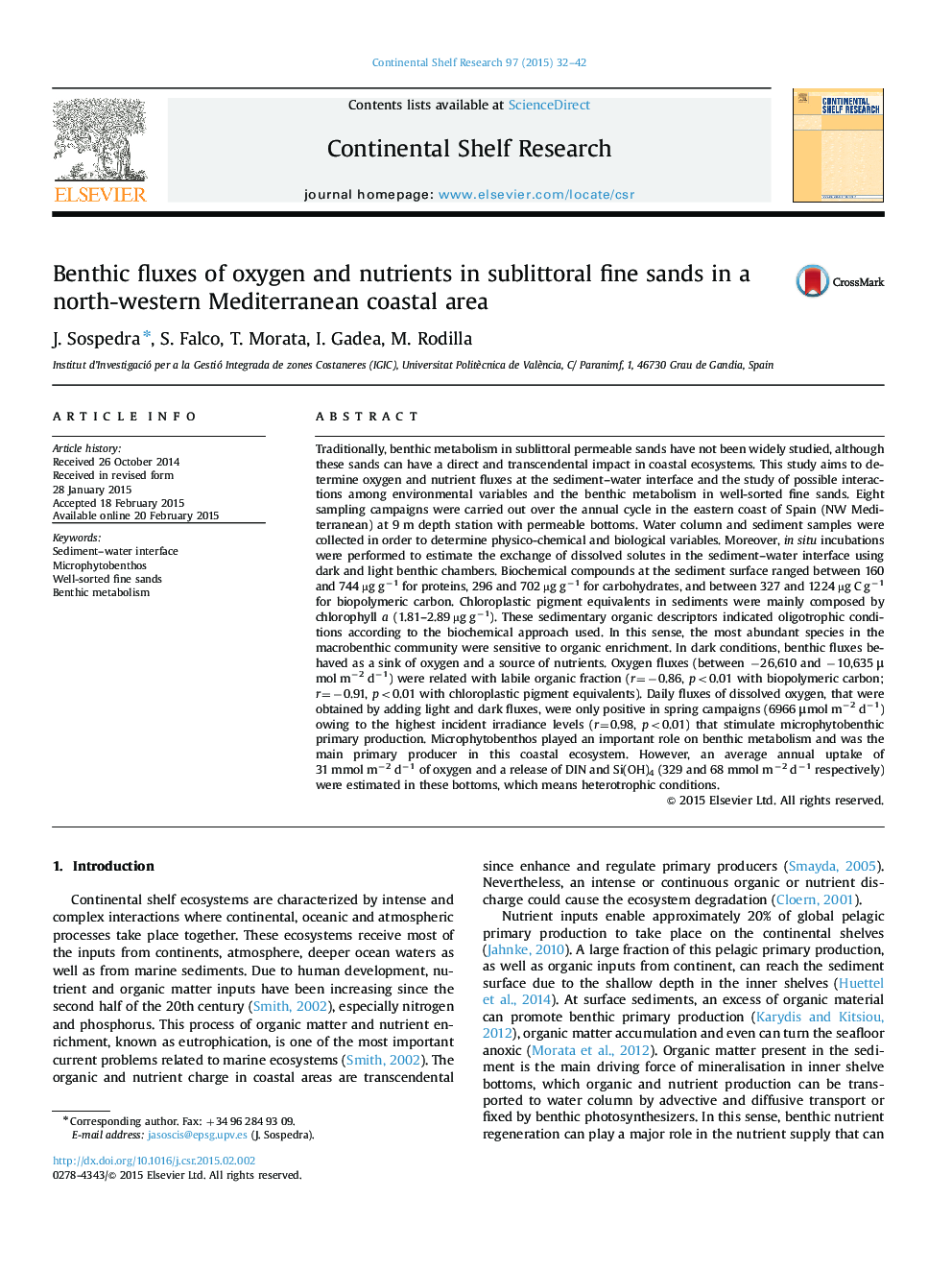| کد مقاله | کد نشریه | سال انتشار | مقاله انگلیسی | نسخه تمام متن |
|---|---|---|---|---|
| 4531742 | 1626115 | 2015 | 11 صفحه PDF | دانلود رایگان |
• Benthic metabolism was studied conducting light and dark benthic incubations.
• Labile organic fraction played a key role in benthic respiration.
• Microphytobenthos played an important role in benthic metabolism driven by light.
• Sublittoral permeable sediments were slightly heterotrophic over the annual cycle.
Traditionally, benthic metabolism in sublittoral permeable sands have not been widely studied, although these sands can have a direct and transcendental impact in coastal ecosystems. This study aims to determine oxygen and nutrient fluxes at the sediment–water interface and the study of possible interactions among environmental variables and the benthic metabolism in well-sorted fine sands. Eight sampling campaigns were carried out over the annual cycle in the eastern coast of Spain (NW Mediterranean) at 9 m depth station with permeable bottoms. Water column and sediment samples were collected in order to determine physico-chemical and biological variables. Moreover, in situ incubations were performed to estimate the exchange of dissolved solutes in the sediment–water interface using dark and light benthic chambers. Biochemical compounds at the sediment surface ranged between 160 and 744 µg g−1 for proteins, 296 and 702 µg g−1 for carbohydrates, and between 327 and 1224 µg C g−1 for biopolymeric carbon. Chloroplastic pigment equivalents in sediments were mainly composed by chlorophyll a (1.81–2.89 µg g−1). These sedimentary organic descriptors indicated oligotrophic conditions according to the biochemical approach used. In this sense, the most abundant species in the macrobenthic community were sensitive to organic enrichment. In dark conditions, benthic fluxes behaved as a sink of oxygen and a source of nutrients. Oxygen fluxes (between −26,610 and −10,635 μmol m−2 d−1) were related with labile organic fraction (r=−0.86, p<0.01 with biopolymeric carbon; r=−0.91, p<0.01 with chloroplastic pigment equivalents). Daily fluxes of dissolved oxygen, that were obtained by adding light and dark fluxes, were only positive in spring campaigns (6966 μmol m−2 d−1) owing to the highest incident irradiance levels (r=0.98, p<0.01) that stimulate microphytobenthic primary production. Microphytobenthos played an important role on benthic metabolism and was the main primary producer in this coastal ecosystem. However, an average annual uptake of 31 mmol m−2 d−1 of oxygen and a release of DIN and Si(OH)4 (329 and 68 mmol m−2 d−1 respectively) were estimated in these bottoms, which means heterotrophic conditions.
Journal: Continental Shelf Research - Volume 97, 1 April 2015, Pages 32–42
